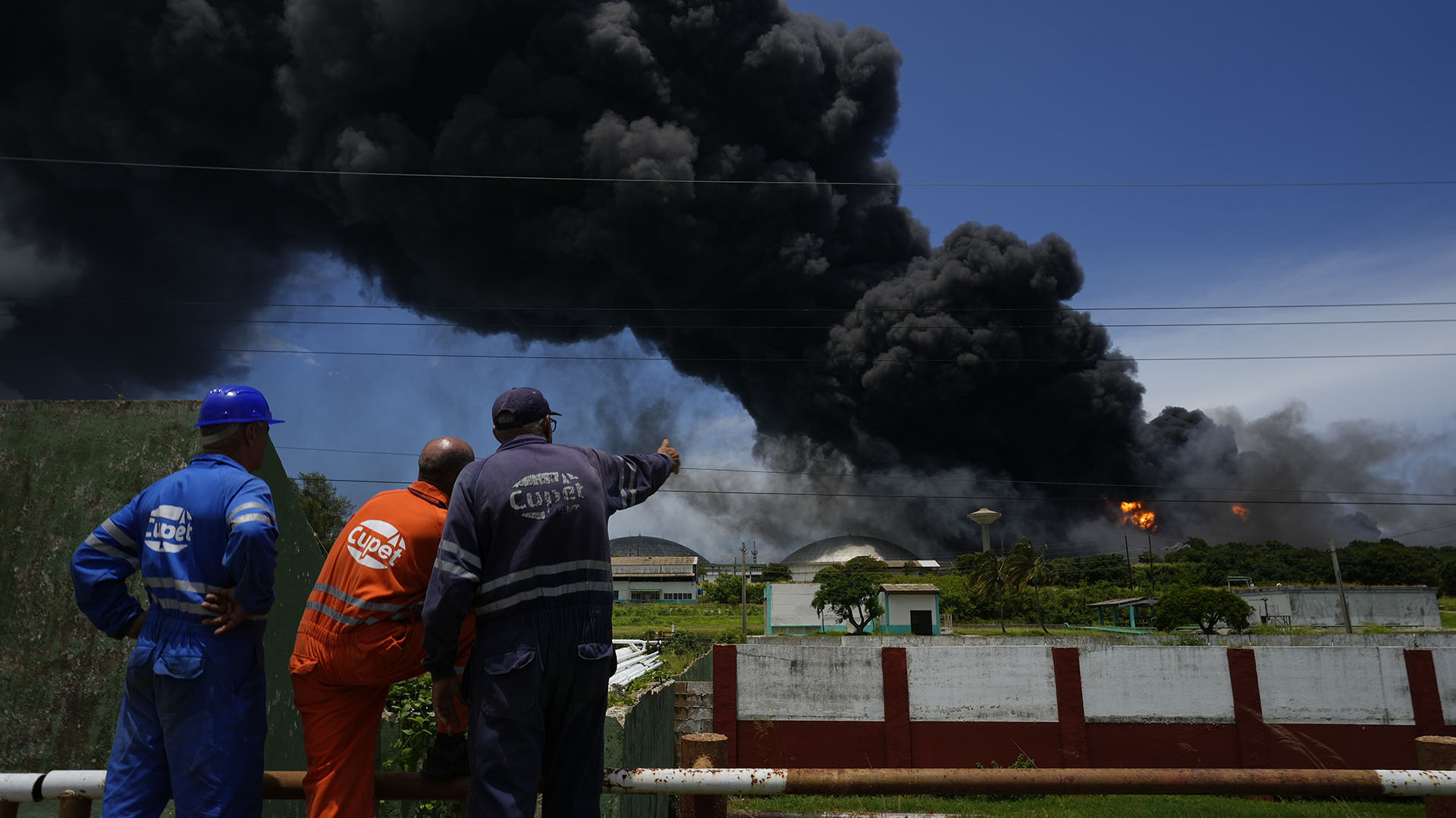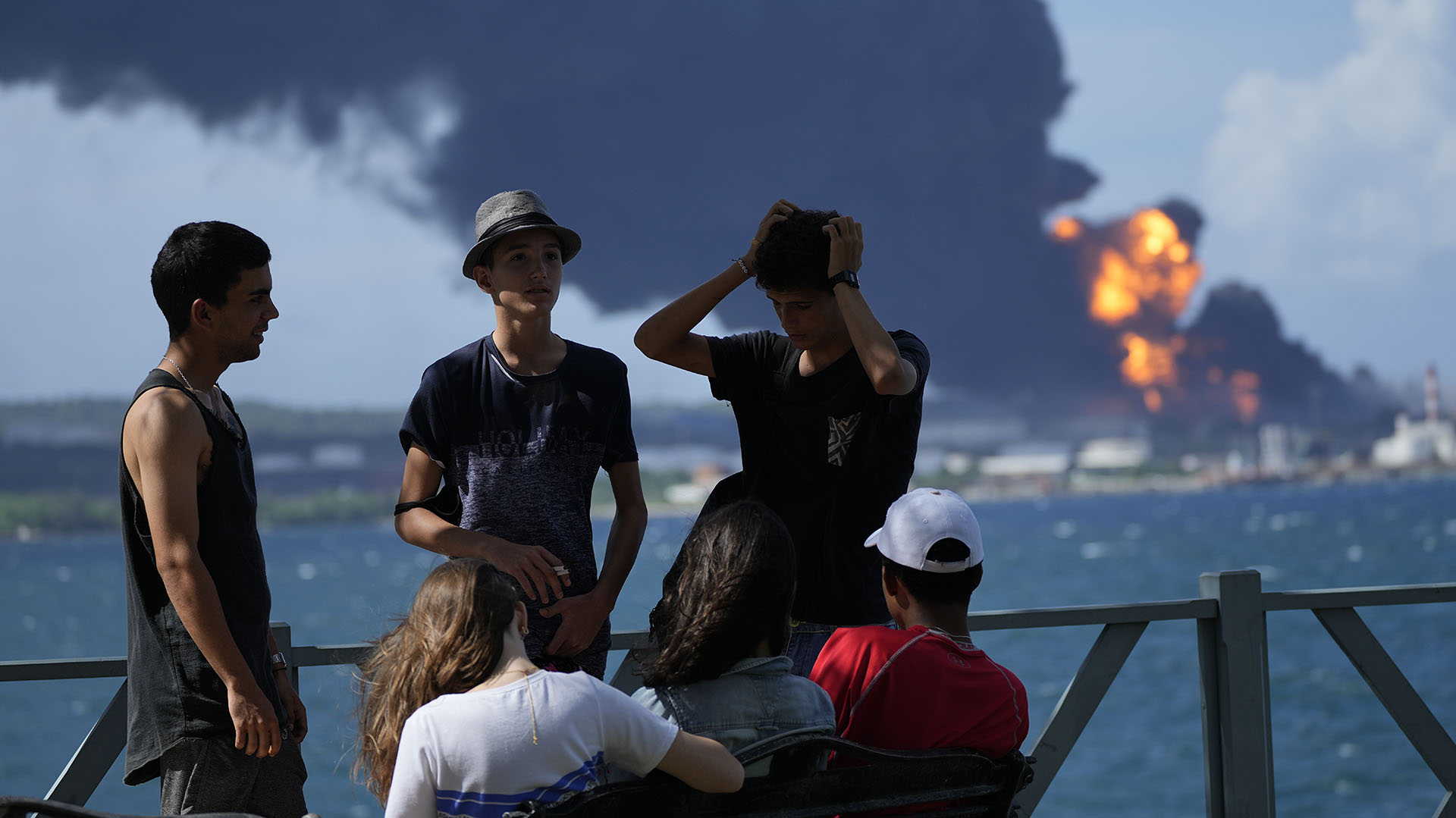
The Minister of Science, Technology and Environment of the cuban dictatorship confirmed that product of combustion in the complex killings exists gas emission.
He explained that a multidisciplinary group of experts has identified several contaminating substances, among them, sulfur dioxide, nitrogen dioxide, carbon monoxide and organic compounds.
The highest concentrations are found in the area close to the incident. He recommended the permanent use of the chinstrap and “not exposing yourself unnecessarily to the open air”
He also warned that the toxic cloud will continue to spread towards the provinces of Matanzas, Mayabeque and would reach Havana, 100 kilometers from the fire.

One dead, 121 injured and 17 missing is the balance of the explosion of two fuel tanks in the city of Matanzasin western Cuba, where the anxiety continues due to the fire that does not go out.
Luis Wong, provincial director of Health of Matanzas, said at a press conference that Of the 121 injured, almost all due to burns, 85 were discharged, 36 are hospitalized, of which five are in critical condition.
Also, they report 17 missing. They are “firefighters who were in the area closest” to the fire, the presidency said on its Twitter account, adding that “Cuba requested help and advice from friendly countries with experience in the oil issue.”
The dictator Miguel Díaz-Canel declared that the extinction of the fire “may take time”, while the director of Commerce and Supply of the state Cuba-Petroleum Union (Cupet), Asbel Leal, specified that the country had never faced a fire of “ the magnitude that we have today”.
The fire broke out last Friday afternoon after lightning struck one of the tanks at the supertanker base located on the outskirts of Matanzas, 100 kilometers east of Havana, at 7:00 p.m. local time.. At 05:00 this Saturday, the fire spread to a second warehouse.
“The noise was felt, like a wave of air that was taking you back,” Laura Martínez, a resident of the community of La Ganadera, about two kilometers from the accident area, told AFP.
According to the Matanzas authorities, the number of evacuees rose to 1,900 people.
The capacity of each deposit is 50,000 cubic meters of crude oil, but the amount they contained at the time of the explosions is unknown. The amount of fuel per tank is comparable to that of 15 Olympic swimming pools.
Both are part of the supertanker base in the industrial area of Matanzas, located almost three kilometers from the Antonio Guiteras thermoelectric plant, the main one in the country.
The base has a lightning rod system, but the discharge was of such magnitude that it was not able to protect it, Rigel Rodríguez, director of the Matanzas Territorial Division of Fuel Marketing, explained to the official Cubadebate website.
Danger Ricardo, a 37-year-old welder who works at the site, cannot explain how the tanks’ lightning rod system failed.
The two tanks supply the Antonio Guiteras thermoelectric plant, the largest in Cuba, but pumping to that plant has not stopped, Granma added.
Several helicopters began to pour seawater into extinction tasks, work stopped in the afternoon due to the increase in flames. In the late afternoon, with a minor fire, it resumed off the bay of Matanzas, a city of 140,000 inhabitants.
The fire occurs at a time when the island has been facing power generation difficulties since last May. due to the obsolescence of its eight thermoelectric plants, breakdowns and scheduled maintenance, lack of fossil fuels and greater demand due to the summer heat.
The generation deficit has caused blackouts of up to 12 hours a day in some regions of the countrywhich have caused irritation in the population and even some protests in rural towns, where people have banged their saucepans shouting slogans at night.
The country’s electrical system currently has an average power distribution capacity of 2,500 megawatts, insufficient for the demand of households at times of maximum consumption, which reaches 2,900 megawatts, according to official information.
KEEP READING:
